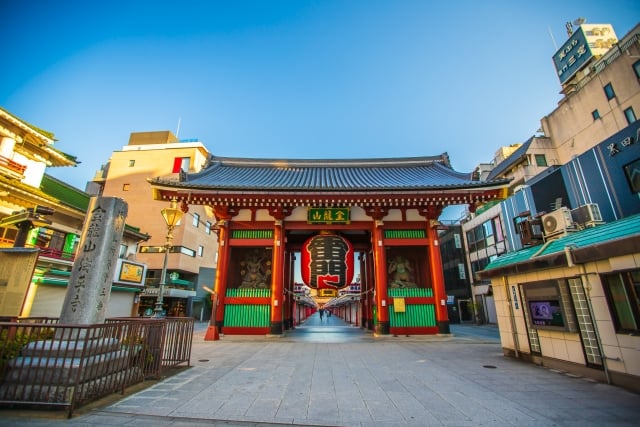Within the capital of Tokyo, Japan, Asakusa is particularly popular for its traditional scenery.
Many foreign tourists visit Asakusa every year, and the most popular spot for sightseeing in Asakusa is Senso-ji Temple, without a doubt.
The temple is easily accessible by train from Asakusa Station, and one can say that its beautiful architecture is a condensed version of Japanese culture.
In this article, we will tell you about the admission fee, photo spots, and the best time to visit Senso-ji, one of the most popular tourist spots in Japan.
Sensoji is the oldest temple in Tokyo
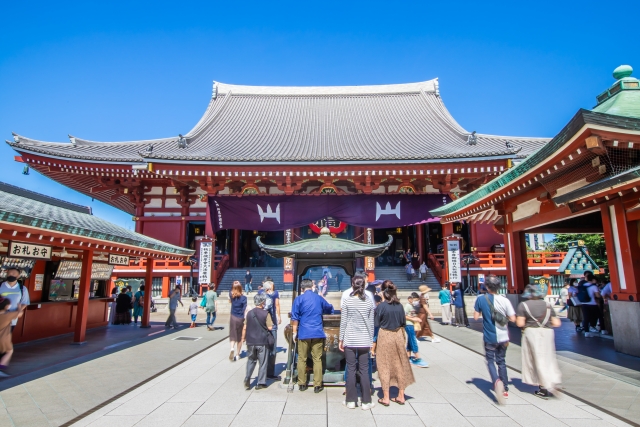
Senso-ji Temple is the oldest temple in Tokyo, built in 628.
The temple was not a large building like today's Senso-ji. Its beginnings were humble: a fisherman found a Kannon (guanyin, 観音) statue caught in his net, and decided to converted his house into a temple so to worship this Kannon.
Gradually, the temple came to be worshipped by the people of Tokyo, and during the Edo period (1603-1868), it became one of the representative temples of Tokyo.
In front of Sensoji Temple is the famous Kaminarimon (雷門 lit. "thunder gate") with its iconic, large lantern.
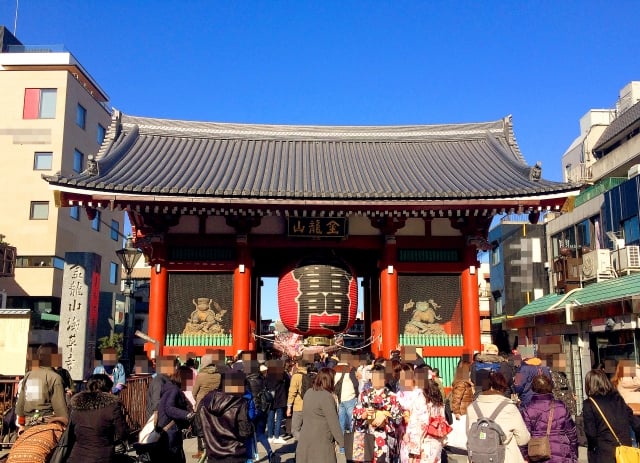
On both sides are enshrined the “God of Wind” and the “God of Thunder,” two deities that protect the temple from floods and fires, and are also popular photo spots.
When you visit, be sure to take a picture in front of the Kaminarimon.
Sensoji is open 24/7, for free!
The Senso-ji temple grounds are open to visitors free of charge at all times, and are crowded with many tourists every day.
The main hall is open from 6 am (6:30 am from October to March) to 5 pm, but the grounds around the main hall and the “Kaminarimon” introduced earlier are open 24 hours a day, so you can visit any time.
Nakamise, the street market from the Edo days
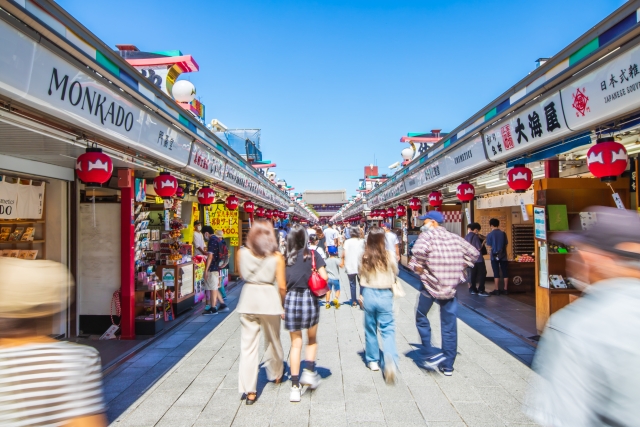
After passing through the Kaminarimon, you will find the 250-meter long “Nakamise Dori”.
"Nakamise-dori" is a street market. With a history dating back to the Edo period, it is a great spot for sightseeing, selling Japanese sweets, toys, souvenirs, and other items.
There are nearly 90 stores on the street, and it is crowded with many tourists. It is a lively place, with shoppers calling out to you and many people taking pictures.
One thing to note is that it is against manners to walk along Nakamise-dori while eating, so please eat in front of each store.
Minding manners is essential for enjoying the Edo atmosphere on Nakamise-dori.
Sensoji is illuminated during the night
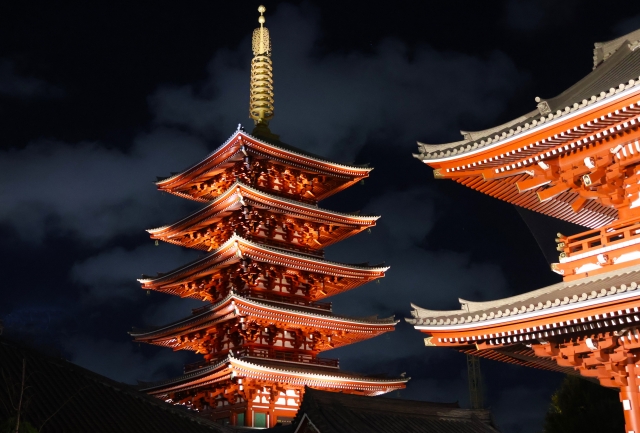
Senso-ji Temple is illuminated until 11 pm every day.
Senso-ji is crowded with many people during the day, but at night it is less crowded, and the illumination of the temple provides a mysterious and different atmosphere from that of the daytime.
Although most people think of visiting temples in the daytime, it is recommended to visit Senso-ji twice, once during the daytime and once at night, so that you can enjoy sightseeing in Tokyo or have dinner before visiting the temple.
During the lighting-up time, the stores on Nakamise-dori are closed and the shutters are also closed, but this allows you to take a leisurely stroll and enjoy Senso-ji at night.
Enjoy Japanese culture at Sensoji Temple, a free tourist attraction!
Like so, Senso-ji Temple in Asakusa, Tokyo, is a popular tourist spot that anyone can enjoy for free, 24 /7.
Starting from the popular photo spot Kaminarimon you can enjoy eating Japanese sweets such as dango (a type of mochi on a skewer) and imo-yokan (sweet potato cake) at Nakamise-dori.
After dinner, we recommend visiting the illuminated Sensoji Temple to enjoy the good old days and Japanese culture.
This wonderful temple can be enjoyed in many ways, so please visit here while you're in Tokyo.
■Sensoji Temple
Address: 2-3-1 Asakusa, Taito-ku, Tokyo
Phone:03-3842-0181(Reception 6 am-5 pm)
Main Shrine: 6 am to 5 pm
Access: 1 min. walk from Asakusa Station
Official website:https://www.senso-ji.jp/english/

